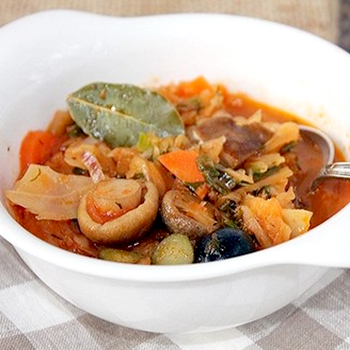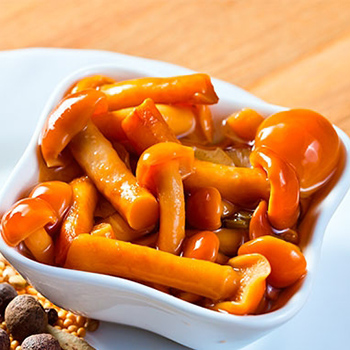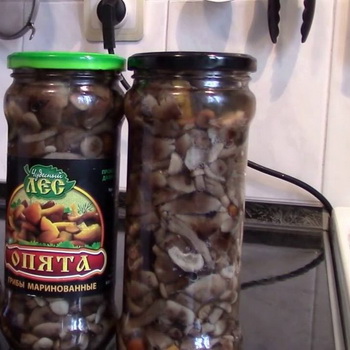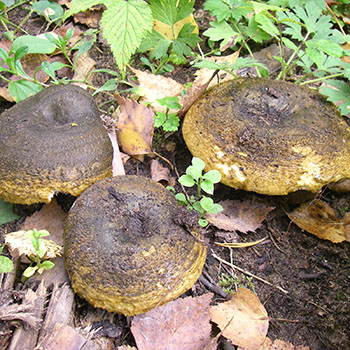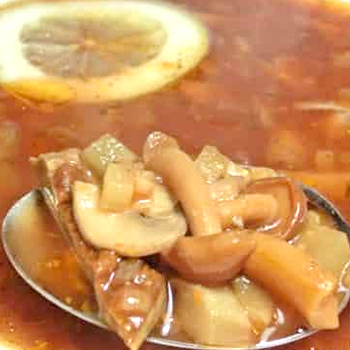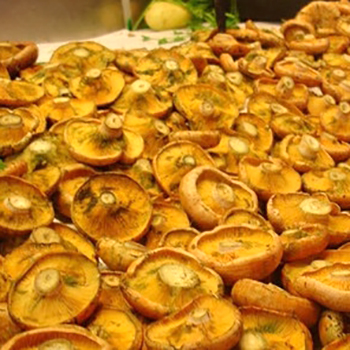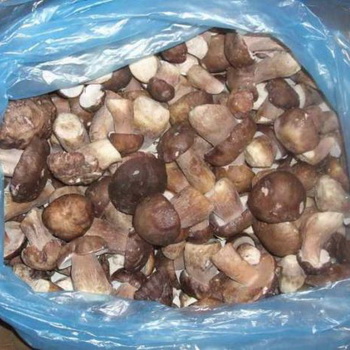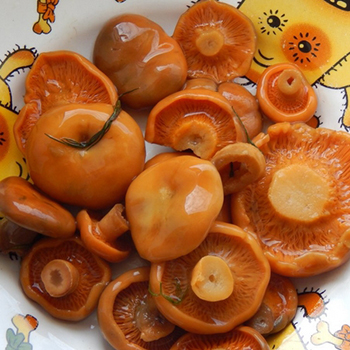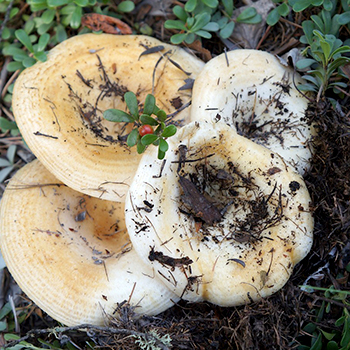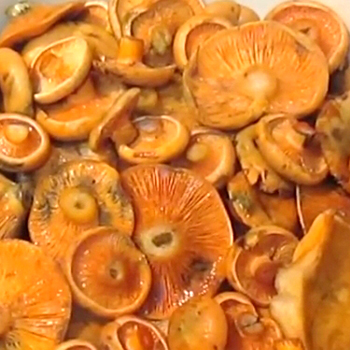Spiderweb mushrooms and their varieties
 Spiderwebs are edible mushrooms that grow in all types of forests. They can be eaten even raw, these mushrooms are no less tasty after heat treatment, as well as in salted form. The cobwebs got their name because of the white "coverlet" that wraps the lower part of the cap and falls on the leg. You need to go to the forest for all types of spiderwebs at the very end of summer and you can collect them until mid-autumn.
Spiderwebs are edible mushrooms that grow in all types of forests. They can be eaten even raw, these mushrooms are no less tasty after heat treatment, as well as in salted form. The cobwebs got their name because of the white "coverlet" that wraps the lower part of the cap and falls on the leg. You need to go to the forest for all types of spiderwebs at the very end of summer and you can collect them until mid-autumn.
Spiderweb Mushroom Cyclo-Violet
Cobweb cycling purple (bloated) – "Cortinarius alboviolaceus" - cap mushroom from the lamellar group. The cap is up to 10 cm in diameter, in a young mushroom it is whitish-purple, lilac with a silvery sheen, then off-white. The pulp is bluish, thick in the middle.


The plates are frequent, wide, at first lilac, then brown. Spore powder, rusty-brown.
Leg up to 8 cm tall, with a tuberous swelling from top to bottom, white with a violet tinge, with a whitish annular stripe.
Grows in deciduous and mixed forests.
Collection time - from August to the end of September.
Before use, you need to pour over boiling water, then you can fry, salt and pickle.
Edible spiderweb mushroom yellow
Webcap yellow(Cantharellus triumphans) - cap mushroom from the lamellar group. The cap is up to 12 cm in diameter, in a young mushroom it is round, in an old one it is flat-convex, thick, yellowish-brown or buffy. The edges of the cap are connected to the stem of the mushroom with a cobweb blanket. The pulp is whitish or light brown, with a pleasant smell and taste.


As you can see in the photo, this edible spiderweb mushroom has whitish, lilac or grayish-bluish plates. In old mushrooms, they are brown, wide. The spore powder is brown.
The leg is high, more than 10 cm, thickened at the base, whitish-yellowish, dense, with several belts of red scales, the remains of the bedspread.
Grows in deciduous and coniferous forests, mainly in birch forests.
Collection time - Aug. Sept.
It is used in food fresh, salted and pickled. Salty cobweb is not inferior in taste to podgruzdki and serushki.
Scaly webcap and its photo
Scaly webcap(Cantharellus pholideus).Hat mushroom from the lamellar group. The cap is up to 10 cm in diameter, convex in young mushrooms, flat in mature ones, with a blunt tubercle, scaly, brownish-brown. In damp weather, slimy, sticky, shiny when dry. The pulp is white, the color does not change on the cut.


The plates of young mushrooms are light, bluish-gray, then rusty-brown. The spore powder is brown.
The leg is low, up to 2 cm, first lilac, then brown, with several brown belts.
Grows in mixed and coniferous forests, mainly in mossy places.
Collection time - from the second half of July to the first half of October.
It is consumed fresh.
Purple spiderweb mushroom (with photo)
Purple spiderweb mushroom(Cantharellus violaceus) belongs to the lamellar group. The cap is up to 12 cm in diameter, convex, then prostrate, dark purple, scaly. The pulp is gray-violet or bluish, fading to white.


Look at the photo: the purple spider web has wide, sparse, thick plates of the same color with the cap. Spore powder, rusty-brown.
The leg is high, up to 16 cm tall, swollen at the base, dark purple, fibrous-scaly.
Grows in deciduous and coniferous forests, more often in pine.
Collection time - Aug. Sept.
It is eaten boiled, dried and pickled.

